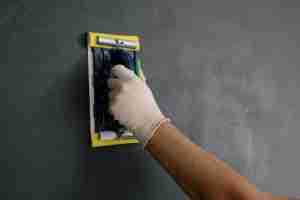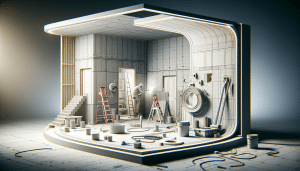Over time, drywall tends to get ugly stains, holes, and cracks and crevices. This gives rise to the need for drywall repair. Fortunately, drywall is relatively easy to repair on your own. Having said that, there are a few guidelines you will need to follow when considering repairing drywall by yourself. Here are some important tips to remember!
Contents
Do Remember Neatness Is Everything
No matter how advanced or expensive equipment you use, if you are unable to give your drywall a neat and finished look, all your effort might just go to waste, which is why it is so important to focus on doing neat and clean work. Make sure to use a box cutter (or any other sharp cutting tool) to get rid of frayed edges of wallboard paper over holes and cracks. Do this before applying a joint compound, or else it will be difficult to hide unpleasant bumps and blemishes.
Don’t Skip On Sanding
Sanding may be a time-consuming task, but it is an important one nonetheless. If you skimp on sanding, the repair site will be quite visible, and that won’t be a pleasant sight – trust us.
Once the repaired area is dry, use sandpaper of a fine-grit (100 or 120). Once you are done with the first round of sanding, add another layer of it while making sure to spread the second layer two inches wider than the first one. Once the second layer dries up, re-sand if needed.
Do Wear a Dust Mask
You may not know this, but fine particles of drywall compounds can harm your lungs if inhaled, which is why it is crucial to wear a dust mask when repairing your drywall – especially when sanding it. Apart from a dust mask, wear disposable gloves as well to keep your hands safe from the side-effects of gypsum dust.
Don’t End Up Cutting Electrical Cords or Plumbing Lines
You should never repair your drywall in a hurry. Often, people end up cutting into electrical cords or plumbing lines through the wall. Whenever repairing your drywall, inspect it from the inside first. Cut no more than one inch of the drywall, using a flashlight, see if there are any wires behind the hole, and then act accordingly.
Do Use Thin Coating
When sanding, use a thin coat of joint compound – it will be more than enough. Keeping it light will prevent you from getting exposed to excessive joint compound later on.
Following these dos and don’ts of drywall repair will give your patch job a phenomenal look. If you can’t do the hard work all by yourself, don’t worry; contact Utah drywall and repair for all the drywall services today!




